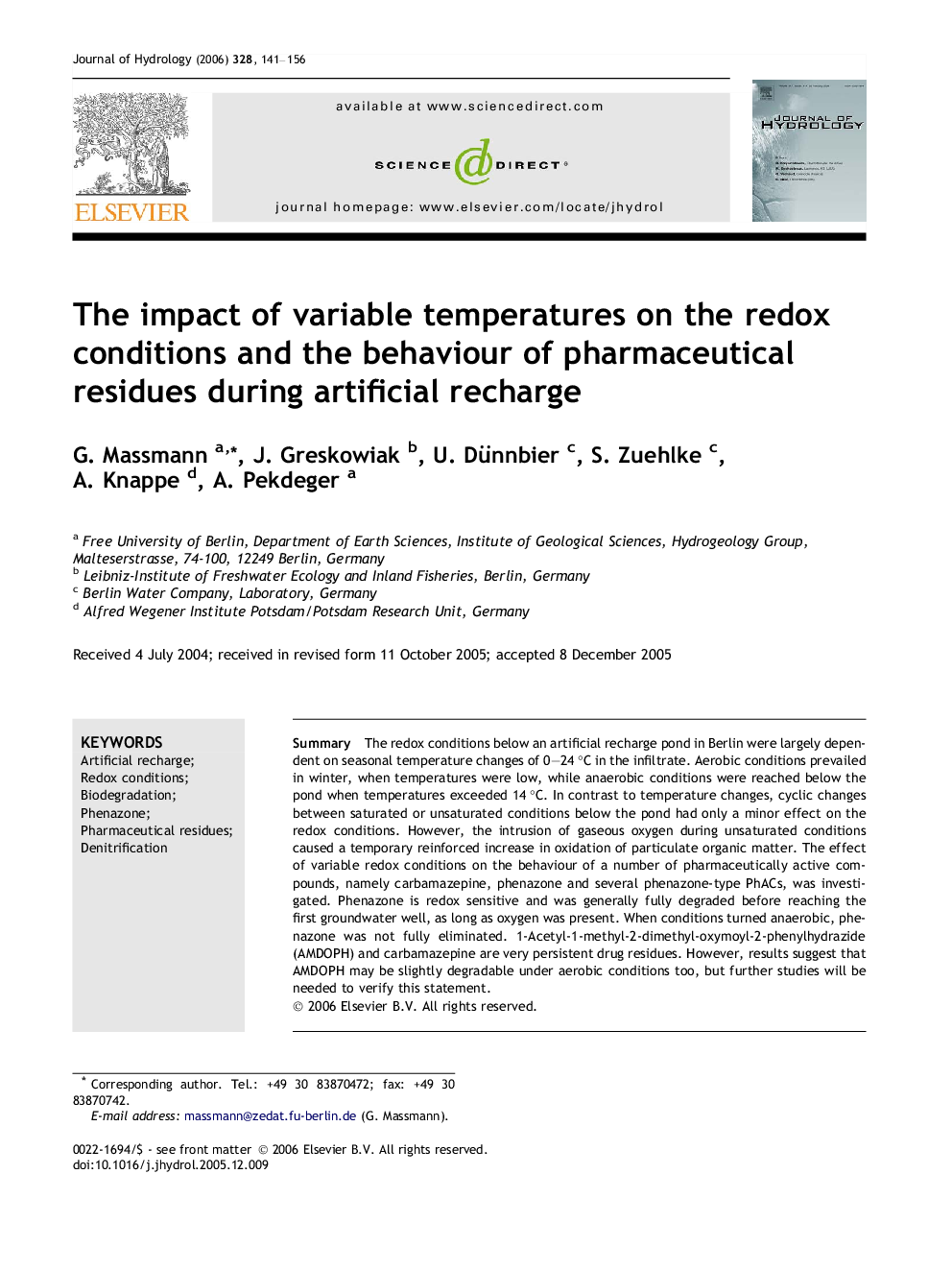| Article ID | Journal | Published Year | Pages | File Type |
|---|---|---|---|---|
| 4580688 | Journal of Hydrology | 2006 | 16 Pages |
SummaryThe redox conditions below an artificial recharge pond in Berlin were largely dependent on seasonal temperature changes of 0–24 °C in the infiltrate. Aerobic conditions prevailed in winter, when temperatures were low, while anaerobic conditions were reached below the pond when temperatures exceeded 14 °C. In contrast to temperature changes, cyclic changes between saturated or unsaturated conditions below the pond had only a minor effect on the redox conditions. However, the intrusion of gaseous oxygen during unsaturated conditions caused a temporary reinforced increase in oxidation of particulate organic matter. The effect of variable redox conditions on the behaviour of a number of pharmaceutically active compounds, namely carbamazepine, phenazone and several phenazone-type PhACs, was investigated. Phenazone is redox sensitive and was generally fully degraded before reaching the first groundwater well, as long as oxygen was present. When conditions turned anaerobic, phenazone was not fully eliminated. 1-Acetyl-1-methyl-2-dimethyl-oxymoyl-2-phenylhydrazide (AMDOPH) and carbamazepine are very persistent drug residues. However, results suggest that AMDOPH may be slightly degradable under aerobic conditions too, but further studies will be needed to verify this statement.
